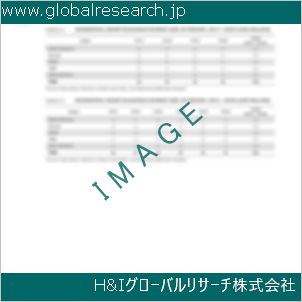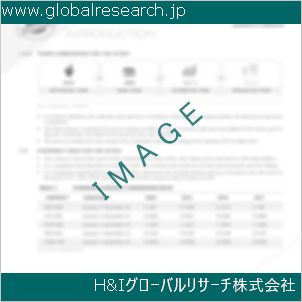Table of Contents
1 Industry Overview of Diethylzinc
1.1 Definition and Specifications of Diethylzinc
1.1.1 Definition of Diethylzinc
1.1.2 Specifications of Diethylzinc
1.2 Classification of Diethylzinc
1.3 Applications of Diethylzinc
1.3.1 Nuclear Application
1.3.2 Non-Nuclear Application
1.4 Industry Chain Structure of Diethylzinc
1.5 Industry Overview and Major Regions Status of Diethylzinc
1.5.1 Industry Overview of Diethylzinc
1.5.2 Global Major Regions Status of Diethylzinc
1.6 Industry Policy Analysis of Diethylzinc
1.7 Industry News Analysis of Diethylzinc
2 Manufacturing Cost Structure Analysis of Diethylzinc
2.1 Raw Material Suppliers and Price Analysis of Diethylzinc
2.2 Equipment Suppliers and Price Analysis of Diethylzinc
2.3 Labor Cost Analysis of Diethylzinc
2.4 Other Costs Analysis of Diethylzinc
2.5 Manufacturing Cost Structure Analysis of Diethylzinc
2.6 Manufacturing Process Analysis of Diethylzinc
3 Technical Data and Manufacturing Plants Analysis of Diethylzinc
3.1 Capacity and Commercial Production Date of Global Diethylzinc Major Manufacturers in 2023
3.2 Manufacturing Plants Distribution of Global Diethylzinc Major Manufacturers in 2023
3.3 R&D Status and Technology Source of Global Diethylzinc Major Manufacturers in 2023
3.4 Raw Materials Sources Analysis of Global Diethylzinc Major Manufacturers in 2023
4 Capacity, Production and Revenue Analysis of Diethylzinc by Regions, Types and Manufacturers
4.1 Global Capacity, Production and Revenue of Diethylzinc by Regions 2019-2024
4.2 Global and Major Regions Capacity, Production, Revenue and Growth Rate of Diethylzinc 2019-2024
4.3 Global Capacity, Production and Revenue of Diethylzinc by Types 2019-2024
4.4 Global Capacity, Production and Revenue of Diethylzinc by Manufacturers 2019-2024
5 Price, Cost, Gross and Gross Margin Analysis of Diethylzinc by Regions, Types and Manufacturers
5.1 Price, Cost, Gross and Gross Margin Analysis of Diethylzinc by Regions 2019-2024
5.2 Price, Cost, Gross and Gross Margin Analysis of Diethylzinc by Types 2019-2024
5.3 Price, Cost, Gross and Gross Margin Analysis of Diethylzinc by Manufacturers 2019-2024
6 Consumption Volume, Consumption Value and Sale Price Analysis of Diethylzinc by Regions, Types and Applications
6.1 Global Consumption Volume and Consumption Value of Diethylzinc by Regions 2019-2024
6.2 Global and Major Regions Consumption Volume, Consumption Value and Growth Rate of Diethylzinc 2019-2024
6.3 Global Consumption Volume and Consumption Value of Diethylzinc by Types 2019-2024
6.4 Global Consumption Volume and Consumption Value of Diethylzinc by Applications 2019-2024
6.5 Sale Price of Diethylzinc by Regions 2019-2024
6.6 Sale Price of Diethylzinc by Types 2019-2024
6.7 Sale Price of Diethylzinc by Applications 2019-2024
6.8 Market Share Analysis of Diethylzinc by Different Sale Price Levels
7 Supply, Import, Export and Consumption Analysis of Diethylzinc
7.1 Supply, Consumption and Gap of Diethylzinc 2019-2024
7.2 Global Capacity, Production, Price, Cost, Revenue, Supply, Import, Export and Consumption of Diethylzinc 2019-2024
7.3 USA Capacity, Production, Price, Cost, Revenue, Supply, Import, Export and Consumption of Diethylzinc 2019-2024
7.4 EU Capacity, Production, Price, Cost, Revenue, Supply, Import, Export and Consumption of Diethylzinc 2019-2024
7.5 China Capacity, Production, Price, Cost, Revenue, Supply, Import, Export and Consumption of Diethylzinc 2019-2024
7.6 Japan Capacity, Production, Price, Cost, Revenue, Supply, Import, Export and Consumption of Diethylzinc 2019-2024
8 Major Manufacturers Analysis of Diethylzinc
8.1 Manufacturer One
8.1.1 Company Profile
8.1.2 Product Picture and Specifications
8.1.2.1 Type I
8.1.2.2 Type II
8.1.2.3 Type III
8.1.3 Capacity, Production, Price, Cost, Gross and Revenue
8.1.4 Contact Information
8.2 Manufacturer Two
8.2.1 Company Profile
8.2.2 Product Picture and Specifications
8.2.2.1 Type I
8.2.2.2 Type II
8.2.2.3 Type III
8.2.3 Capacity, Production, Price, Cost, Gross and Revenue
8.2.4 Contact Information
8.3 Manufacturer Three
8.3.1 Company Profile
8.3.2 Product Picture and Specifications
8.3.2.1 Type I
8.3.2.2 Type II
8.3.2.3 Type III
8.3.3 Capacity, Production, Price, Cost, Gross and Revenue
8.3.4 Contact Information
8.4 Manufacturer Four
8.4.1 Company Profile
8.4.2 Product Picture and Specifications
8.4.2.1 Type I
8.4.2.2 Type II
8.4.2.3 Type III
8.4.3 Capacity, Production, Price, Cost, Gross and Revenue
8.4.4 Contact Information
8.5 Manufacturer Five
8.5.1 Company Profile
8.5.2 Product Picture and Specifications
8.5.2.1 Type I
8.5.2.2 Type II
8.5.2.3 Type III
8.5.3 Capacity, Production, Price, Cost, Gross and Revenue
8.5.4 Contact Information
…
9 Marketing Trader or Distributor Analysis of Diethylzinc
9.1 Marketing Channels Status of Diethylzinc
9.2 Traders or Distributors with Contact Information of Diethylzinc by Regions
9.3 Ex-work Price, Channel Price and End Buyer Price Analysis of Diethylzinc
9.4 Regional Import, Export and Trade Analysis of Diethylzinc
10 Industry Chain Analysis of Diethylzinc
10.1 Upstream Major Raw Materials Suppliers Analysis of Diethylzinc
10.1.1 Major Raw Materials Suppliers with Contact Information Analysis of Diethylzinc
10.1.2 Major Raw Materials Suppliers with Supply Volume Analysis of Diethylzinc by Regions
10.2 Upstream Major Equipment Suppliers Analysis of Diethylzinc
10.2.1 Major Equipment Suppliers with Contact Information Analysis of Diethylzinc
10.2.2 Major Equipment Suppliers with Product Pictures Analysis of Diethylzinc by Regions
10.3 Downstream Major Consumers Analysis of Diethylzinc
10.3.1 Major Consumers with Contact Information Analysis of Diethylzinc
10.3.2 Major Consumers with Consumption Volume Analysis of Diethylzinc by Regions
10.4 Supply Chain Relationship Analysis of Diethylzinc
11 Development Trend of Analysis of Diethylzinc
11.1 Capacity, Production and Revenue Forecast of Diethylzinc by Regions and Types
11.1.1 Global Capacity, Production and Revenue of Diethylzinc by Regions 2024-2029
11.1.2 Global and Major Regions Capacity, Production, Revenue and Growth Rate of Diethylzinc 2024-2029
11.1.3 Global Capacity, Production and Revenue of Diethylzinc by Types 2024-2029
11.2 Consumption Volume and Consumption Value Forecast of Diethylzinc by Regions, Types and Applications
11.2.1 Global Consumption Volume and Consumption Value of Diethylzinc by Regions 2024-2029
11.2.2 Global and Major Regions Consumption Volume, Consumption Value and Growth Rate of Diethylzinc 2024-2029
11.2.3 Global Consumption Volume and Consumption Value of Diethylzinc by Types 2024-2029
11.2.4 Global Consumption Volume and Consumption Value of Diethylzinc by Applications 2024-2029
11.3 Supply, Import, Export and Consumption Forecast of Diethylzinc
11.3.1 Supply, Consumption and Gap of Diethylzinc 2024-2029
11.3.2 Global Capacity, Production, Price, Cost, Revenue, Supply, Import, Export and Consumption of Diethylzinc 2024-2029
11.3.3 USA Capacity, Production, Price, Cost, Revenue, Supply, Import, Export and Consumption of Diethylzinc 2024-2029
11.3.4 EU Capacity, Production, Price, Cost, Revenue, Supply, Import, Export and Consumption of Diethylzinc 2024-2029
11.3.5 China Capacity, Production, Price, Cost, Revenue, Supply, Import, Export and Consumption of Diethylzinc 2024-2029
11.3.6 Japan Capacity, Production, Price, Cost, Revenue, Supply, Import, Export and Consumption of Diethylzinc 2024-2029
12 New Project Investment Feasibility Analysis of Diethylzinc
12.1 New Project SWOT Analysis of Diethylzinc
12.2 New Project Investment Feasibility Analysis of Diethylzinc
13 Conclusion of the Global Diethylzinc (CAS 557-20-0) Industry 2024 Market Research Report
| ※参考情報 ジエチル亜鉛(Diethylzinc)は、化学式 C4H10Zn で表される無機化合物であり、亜鉛の有機金属化合物の一種です。CAS番号は557-20-0です。ジエチル亜鉛は、亜鉛が二つのエチル基に結合している構造を持ち、一般的には液体の形で存在します。その性質から、化学合成において多くの重要な役割を果たしています。 ジエチル亜鉛の特徴と性質として、非常に活性な化合物であることが挙げられます。特に、空気中の水分と反応しやすく、加水分解によって亜鉛酸化物やエタノールを生成するため、取り扱いには細心の注意が必要です。同様に、ジエチル亜鉛は強い還元剤として働き、特定の反応において重要な役割を果たします。また、その揮発性も特徴の一つであり、一定の条件下でガス状に変化することができます。このため、使用する際には適切な通風と安全装置が求められます。 ジエチル亜鉛は、さまざまな種類の化学反応に利用されています。特に、オルガノ金属化学やグリグナ反応(Grignard反応)での試薬として用いられます。これにより、アルコールやエステルなどの有機化合物を合成することが可能になります。また、ジエチル亜鉛は、特定の条件下でカップリング反応を促進したり、デオキシ化反応に寄与したりすることで、複雑な分子の合成に貢献します。 用途に関しては、ジエチル亜鉛は主に有機合成化学において重要な役割を果たしています。特に、製薬や農薬の開発において、特定の化合物を合成する際に欠かせない材料です。また、ジエチル亜鉛を用いることで、さまざまな機能性材料や新しい化学物質の開発にも寄与しています。 関連技術としては、ジエチル亜鉛を使用する際には、リアクターの設計や操作技術が重要です。取扱いにおいては、反応条件や反応系の制御が特に求められ、温度や圧力の管理、そして反応生成物の精製技術などが鍵となります。また、ジエチル亜鉛の取り扱いは、専門的な知識と訓練を受けた技術者によるものでなければなりません。安全管理のために、爆発や引火の危険があるため、適切な保護具を着用し、作業する環境を整えることが必要です。 さらに、ジエチル亜鉛は、持続可能な化学の観点からも注目されています。反応の過程で副生成物が少ないため、グリーンケミストリーの原則に則ったプロセスに貢献します。これにより、無駄な材料を削減し、より効率的な化学反応を実現することができます。 結論として、ジエチル亜鉛は、工業的な応用から研究段階まで幅広く利用される重要な化合物です。その活性の高さや独自の性質から、多岐にわたる用途が開発されており、今後もさらなる利用が期待されます。しかし、その取り扱いや反応メカニズムについては、慎重な理解と熟練した技術が不可欠です。 |
❖ 免責事項 ❖
http://www.globalresearch.jp/disclaimer












